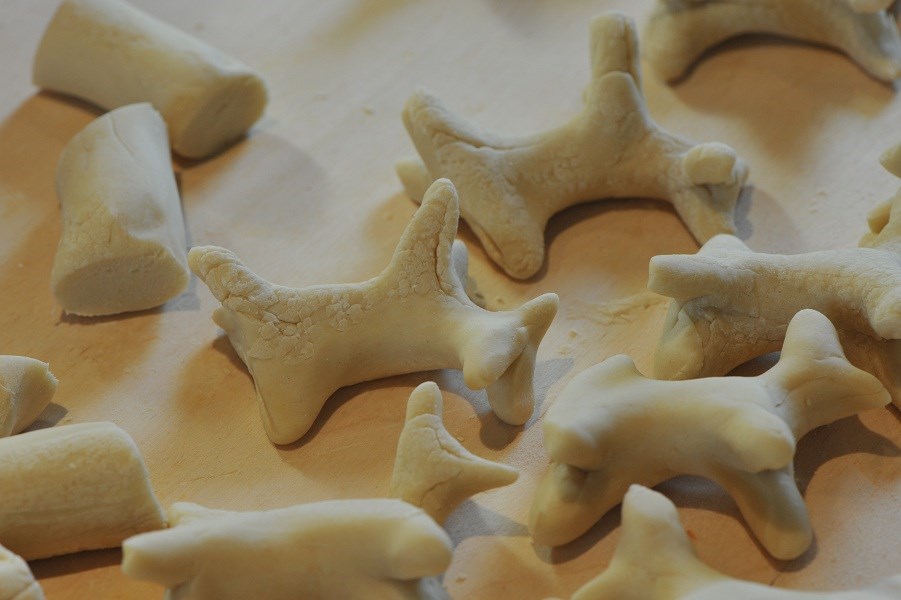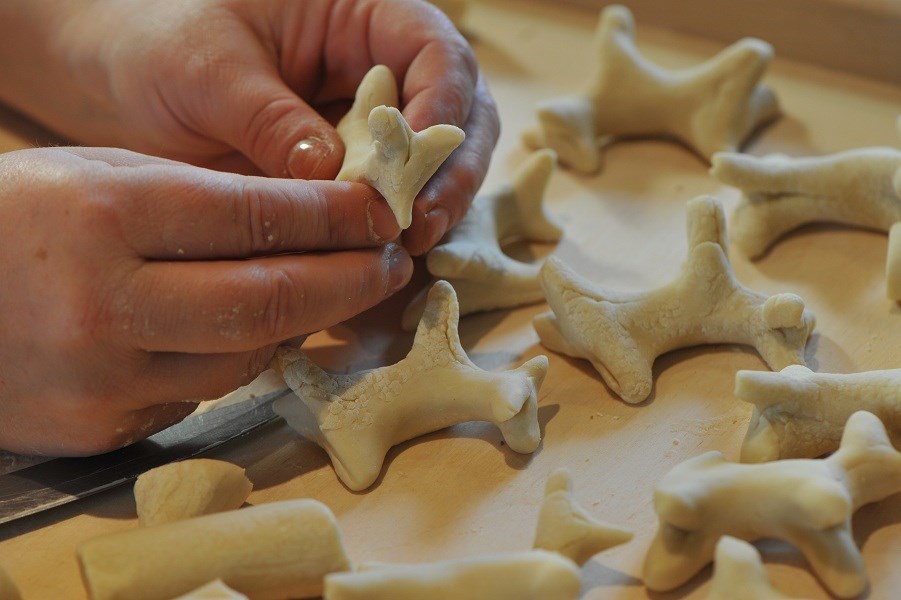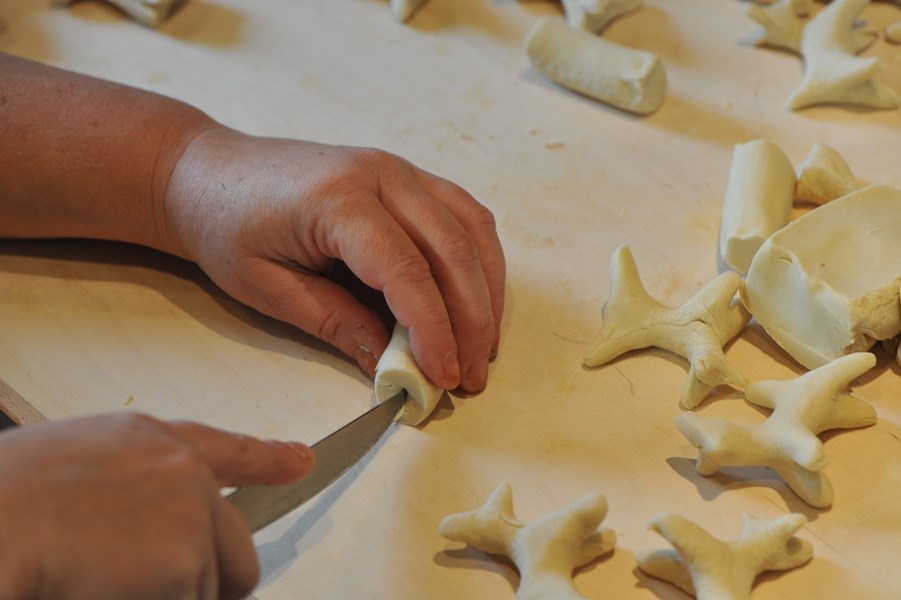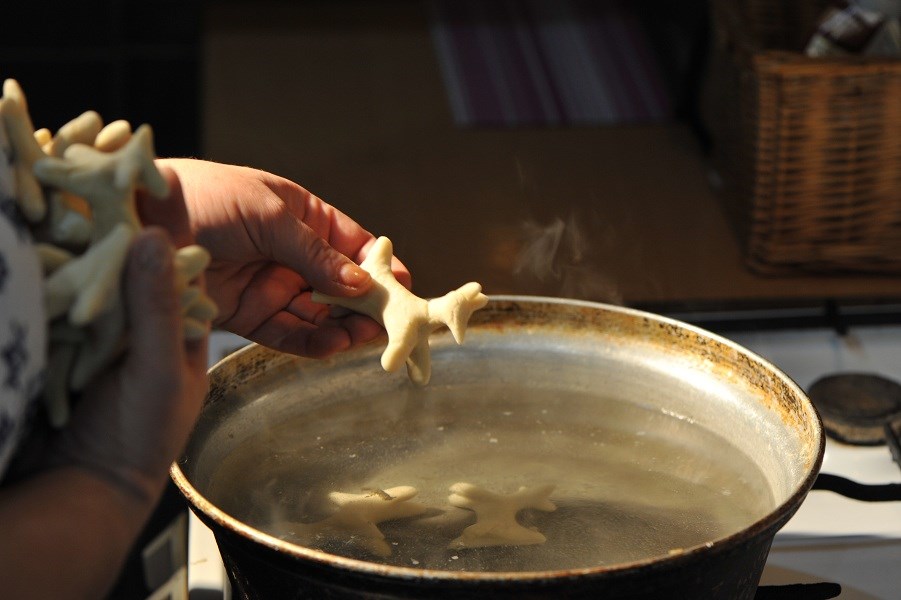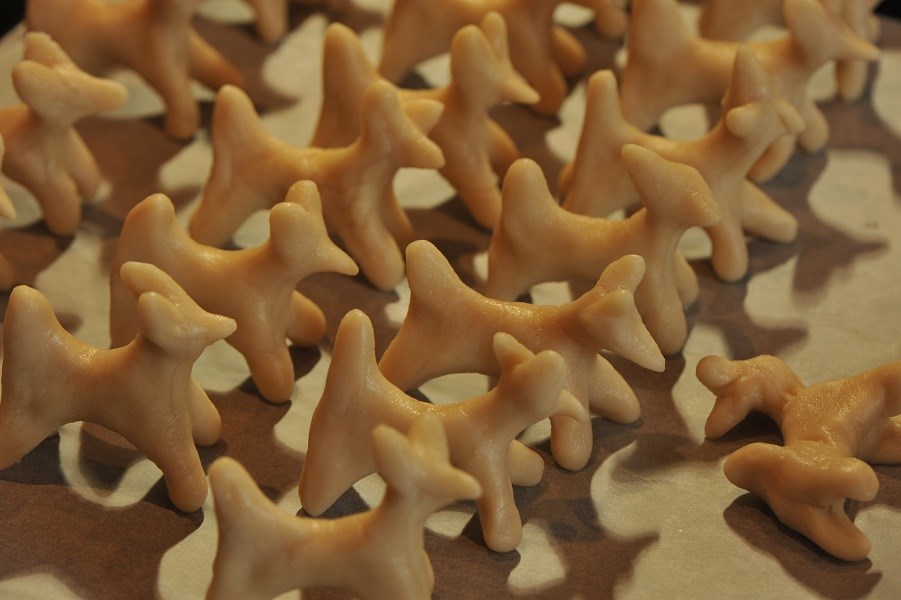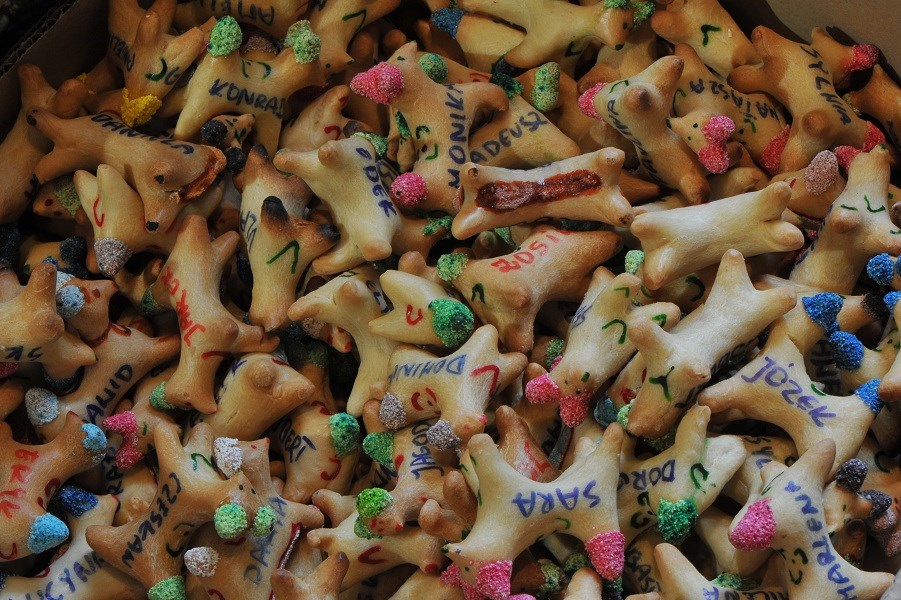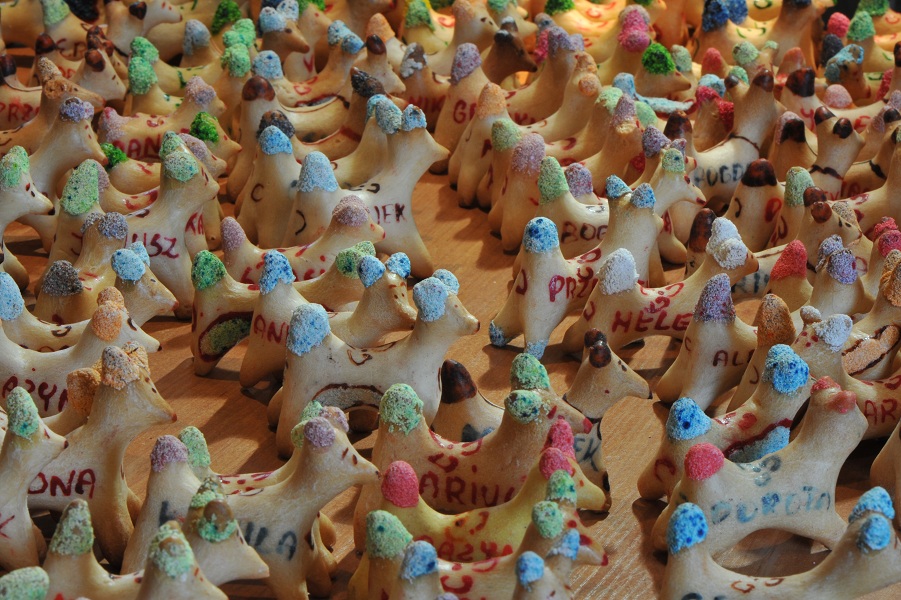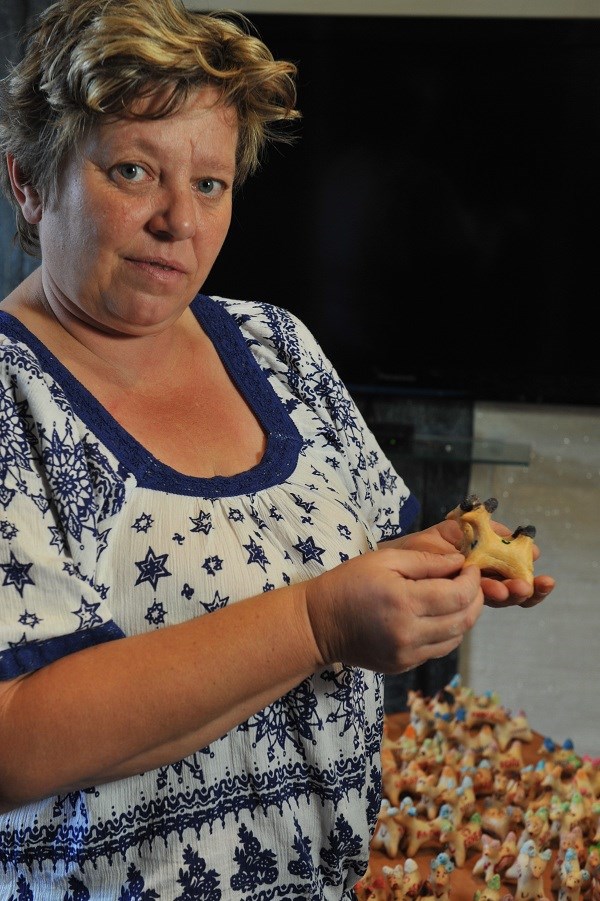Goat figures made by Agnieszka Kołaczkowska, who considers them the most important part of her life, must clearly be endowed with miraculous powers. Even her children happen to be jealous about them: when she moulds them, smooths them and caresses each. She becomes easily upset if any of them breaks and she has to put all her meticulous care into mending it. Her hands are now so agile that they can mould without any coordination with the eyes. This has been happening for 16 years now.
Some people have never heard folk legends about Prostyń goat figures. They think they should buy them at commemorative church fairs as a good luck charm. Those in the know treat them with piety as ceremonial bread and when it becomes stale they take particular care not to throw it away but burn it.
Prostyń goats are baked figurines commonly linked with a miraculous statue held at Holy Trinity and Saint Anne’s Sanctuary in Prostyń. One local tradition has it that when Prostyń’s first wooden church was constructed at the beginning of the 16th century, the flood brought a miraculous Trinity figure. The goats grazing in the fields by the River Bug were reported to spot the miraculous figure on the swelling river. They were said to bleat so loud that it drew attention from the local fishermen, who recovered the figure from the river, transferred it to the Sanctuary, where they mounted it on the high altar. A goat-shaped cake is baked in the area to commemorate the event.
Another account has it that goat-shaped figurines date from the Tsar’s persecution of the Uniate Church in the region of Podlasie. The faithful, who were not allowed to attend Catholic churches, resorted to a number of tricks and deception. One of the ruses they used was to attend a church fair in Prostyń disguised as goat mongers. They would tie the animals to the trees and next mix in with the crowd to receive sacraments. Another explanation derives the custom from the coat of arms of Półkozic belonging to the Prostyński noble family. With all these accounts, Prostyń goats are now a regular feature at the local sanctuary and elsewhere in the vicinity. Even missionaries were reported to promote Prostyń goat figures in Africa or Asia.
Agnieszka Kołaczkowska started her adventure with baking Prostyń goat figures by accident. As she was attending a church fair, she came across an elderly lady selling her handmade goats. The lady immediately spot the talent in Agnieszka, who now continues her legacy. She wakes up every day at 6 am. She says she can mould her goats all day long until midnight, without eating or drinking, just sitting and watching TV. With flour, water and a little bit of yeast, dough is very simple to make, but it must be kneaded to perfection. Then you roll it as if you were making kopytka (small dumplings made of mashed potatoes, eggs and flour). Agnieszka measures the dough in her fingers, then she cuts it into pieces and moulds into goat-shaped figurines. Then she proceeds to steaming the goats in her electric cake pan while stirring at the same time. Next she fishes the goats out with a strainer and tempers them with cold water. Some goats are not able to survive the plunge. Glistening and well formed, they are transferred back onto a pastry board where finishing touches and last improvements are added. The goats land in an oven for an hour. Mind you, the oven must necessarily be gas-heated because the goats like fire better than electricity. All the stages in the process are strictly defined and none of them can be omitted. The final stage is decoration. Agnieszka’s goats have gender: she-goats have their horns painted pink, whereas he-goats come in blue, but other colours such as yellow, orange or green are also used: bright for girls and darker for boys. The goats are later dyed in food colourings with an admixture of egg and semolina to obtain their unique texture. Painted in brown, traditional goats sell like hot cakes, but Agnieszka also tends to add new patterns, e.g. with names. Some customers tend to choose lopsided goats, which is probably out of pity for less shapely specimens.
Agnieszka has to mould her herd all winter long to be ready for the church fair season. Ca. 5000 goats is an absolute minimum. Her church fair tour is performed according to a strictly defined timetable: Prostyń, Czerwin, Kamianka, Troszyn, Szulborze Wielkie, Dąbrówka, Ostrów Mazowiecka (Saint Stanislaus Day) and many other destinations. The season continues from spring until autumn. It begins on 3 May with a church fair in Zaręby Kościelne and comes to a close with All Saints’ Day on 1 November.



